The Pygmy Rasbora, also known as Boraras maculatus, is a small and beautifully striking nano fish that is highly sought after by aquarists for its schooling behavior. Endemic to Southeast Asia, this fish grows up to one inch in size and requires intermediate care level.
It is an egg scatterer and can be kept in small tanks, making it a great choice for nano aquarium setups. With its vibrant colors and peaceful nature, the Pygmy Rasbora is a popular choice for fish enthusiasts looking to add a small, eye-catching fish to their aquarium.
Table of Contents
Introduction To Pygmy Rasbora
The Pygmy Rasbora, also known as Boraras maculatus, is a stunning nano fish that is highly sought after by aquarium enthusiasts. With its vibrant colors and schooling behavior, it adds beauty and life to any freshwater tank.
Overview Of Pygmy Rasbora As A Popular Freshwater Fish:
- Pygmy Rasboras, scientifically known as Boraras maculatus, are small freshwater fish that are popular among aquarium enthusiasts due to their vibrant colors and peaceful nature.
- These tiny fish, measuring only about 1 inch in length, are native to Southeast Asia and are commonly found in the peat swamps of Thailand, Malaysia, and Sumatra.
- Pygmy Rasboras are beloved for their bright red and orange hues, which make them an eye-catching addition to any aquarium. They also have striking black spots along their body, adding to their visual appeal.
- Due to their small size, Pygmy Rasboras are best kept in groups of at least six or more in a well-established planted aquarium. They are known to be quite social and thrive in a community setting.
- As peaceful fish, they can coexist with a wide variety of other small, non-aggressive fish species. However, caution should be taken when choosing tank mates to ensure compatibility with their peaceful nature.
| Attribute | Details |
|---|---|
| Scientific Name | Boraras maculatus |
| Common Name | Pygmy Rasbora |
| Origin | Southeast Asia |
| Size | Up to 1 inch (2.5 cm) |
| Life Expectancy | 3-4 years |
| Different Colors | Reddish body with dark spots |
| Diet | Omnivore; prefers small live or frozen food |
| Temperament | Peaceful and shy |
| Tank Size | Minimum 5 gallons (preferably larger for groups) |
| Temperature | 72-79°F (22-26°C) |
| pH | 4.0-7.0 |
| Water Hardness Level | Very soft to soft |
| Care Level | Moderate |
| Breeding Style | Egg scatterer |
| Compatible Fish | Other small, peaceful species |
| Type of Tank Most Suitable | Heavily planted nano tanks |
| Tank Mates | Shrimps, snails, other micro fish |
Description Of Pygmy Rasbora’S Appearance And Behavior:
- Pygmy Rasboras have a slender body shape, which enables them to navigate easily through dense vegetation in their natural habitat.
- These fish are known for their vibrant coloration, with shades of red and orange that make them stand out in an aquarium. They also have distinctive black spots along their body, giving them a speckled appearance.
- Known for their peaceful nature, Pygmy Rasboras are calm and non-aggressive towards other fish in the tank. They are also lively swimmers, constantly exploring their surroundings.
- Pygmy Rasboras prefer to inhabit the upper levels of the water column, occasionally venturing into the middle and lower regions. They are known to have a preference for slow-moving or still water.
- In their natural habitat, Pygmy Rasboras often live in calm, shaded areas such as streams and rivers with dense vegetation. They are well-adapted to this environment and display similar behavior in a home aquarium.
Care And Breeding Of Pygmy Rasbora:
- Proper care is crucial for the health and well-being of Pygmy Rasboras in an aquarium setting. Here are some key factors to consider:
- Tank size: Pygmy Rasboras are small fish and can thrive in a tank as small as 10 gallons. However, a larger tank with more swimming space is always beneficial.
- Water parameters: They prefer slightly acidic water (pH 6.0-7.0) and soft to moderately hard water. The temperature should be maintained between 75-82°F (24-28°C).
- Tank setup: Provide plenty of plants, driftwood, and hiding spots to mimic their natural habitat. Pygmy Rasboras appreciate a densely planted tank with subdued lighting.
- Feeding: They are omnivorous and will readily accept small live or frozen foods such as daphnia, brine shrimp, and micro worms. They can also be fed high-quality flake or pellet foods.
- Water quality: Regular water changes and maintenance are essential to keep the water clean and free from toxins. A well-functioning filtration system should be in place.
- Breeding Pygmy Rasboras can be a rewarding experience. Here are some tips for successful breeding:
- Provide a separate breeding tank with gentle filtration and subdued lighting.
- Introduce a group of Pygmy Rasboras to the breeding tank, ensuring a ratio of at least two females to one male.
- Ensure the water parameters are appropriate for breeding, such as slightly warmer water with a temperature of around 82°F (28°C).
- Provide fine-leaved plants like Java moss or spawning mops in the breeding tank as a suitable substrate for the fish to lay their eggs.
- Once spawning has occurred, remove the adult fish from the breeding tank to prevent them from eating the eggs.
- The eggs will hatch within 24-48 hours, and the fry can be fed infusoria or newly hatched baby brine shrimp until they are large enough to consume regular food.
By following these care and breeding guidelines, you can enjoy the beauty and fascinating behavior of Pygmy Rasboras in your home aquarium. Their small size and peaceful nature make them an ideal choice for both beginner and experienced fish keepers.
So, why not add a school of these vibrant little fish to your aquatic collection?
The Ideal Tank Setup For Pygmy Rasbora
The ideal tank setup for Pygmy Rasbora, a popular nano fish known for its striking beauty and schooling behavior, includes a small-sized tank with peaceful tank mates, specific water parameters, and appropriate feeding techniques. Creating a suitable environment will ensure the health and happiness of these small, freshwater fish that are endemic to Southeast Asia.
Tank Size And Requirements For Pygmy Rasbora:
- The ideal tank size for Pygmy Rasbora is a minimum of 10 gallons.
- Provide a tank with a length of at least 20 inches to allow the fish ample swimming space.
- A larger tank is recommended if you plan on keeping a larger group of Pygmy Rasbora.
- It is important to create a natural environment with plenty of hiding spots using live plants, driftwood, and rocks.
- Avoid using sharp or rough decorations to prevent any injuries to the delicate fins of the Pygmy Rasbora.
- Maintaining the water quality in the tank is crucial for the health of your Pygmy Rasbora.
Choosing The Right Substrate And Decorations:
- Use a fine-grained substrate like sand or a mixture of sand and peat moss to mimic Pygmy Rasbora’s natural habitat.
- The dark-colored substrate will help bring out the vibrant colors of the fish.
- Create an aquascape with live plants such as Java moss, Anubias, and Vallisneria to provide hiding spots and create a natural feel.
- Add floating plants like Amazon Frogbit or Duckweed to provide shade and create a sense of security for the Pygmy Rasbora.
- Include driftwood or small caves for the fish to explore and find shelter.
- Avoid sharp or rough decorations that may cause harm to the Pygmy Rasbora’s delicate fins.
Water Parameters And Temperature For Pygmy Rasbora:
- Maintain a temperature between 75 to 82°F (24 to 28°C) in the tank.
- Keep the pH level between 6.5 and 7.5 to create the ideal conditions for Pygmy Rasbora.
- The hardness of the water should be around 5 to 12 dGH.
- Perform regular water changes of 20-30% every two weeks to maintain water quality.
- Use a good quality filter to keep the tank water clean and to provide gentle water circulation.
- Avoid sudden changes in water parameters, as Pygmy Rasbora are sensitive to fluctuations.
With these tank setup requirements, you can create a comfortable and natural habitat for your Pygmy Rasbora. Remember to monitor the water parameters regularly and provide a well-maintained environment for the health and well-being of your fish.
Feeding And Maintenance Of Pygmy Rasbora
The Pygmy Rasbora, scientifically known as Boraras maculatus, is a popular nano fish among aquarists due to its beautiful appearance and schooling behavior. This tiny freshwater fish is endemic to Southeast Asia and requires proper feeding and maintenance to thrive in an aquarium setting.
Recommended Diet For Pygmy Rasbora:
- Feed a variety of high-quality, small-sized foods:
- Specialized fish flakes
- Micro pellets
- Frozen or live foods like daphnia, brine shrimp, or bloodworms
- Offer a mix of dry and live food to ensure a well-balanced diet.
- Consider supplementing their diet with small amounts of vegetable matter such as blanched spinach or spirulina flakes.
Feeding Schedule And Portion Control:
- Feed Pygmy Rasboras 2 to 3 times a day in small portions that they can consume within 1-2 minutes.
- Overfeeding can lead to water quality issues and health problems, so ensure portion control.
- Adjust the amount of food given based on their appetite and the presence of any uneaten food after feeding.
Maintaining Water Quality And Performing Regular Maintenance:
- Perform regular water changes of 10-20% each week to maintain optimal water quality and remove any accumulated waste or toxins.
- Use a good quality water conditioner to remove harmful chlorine or chloramine from tap water.
- Monitor water parameters regularly using a test kit to ensure they are within the recommended ranges:
- Temperature: 72-80°F (22-27°C)
- PH: 6.0-7.5
- Ammonia, nitrite, and nitrate levels should be kept at 0 ppm, 0 ppm, and below 20 ppm respectively.
- Keep the aquarium clean by regularly removing any debris or uneaten food using a siphon or aquarium vacuum.
- Ensure proper filtration and consider adding a sponge filter to provide additional biological filtration and gentle water movement.
Remember, maintaining good water quality is crucial for the overall health and well-being of your Pygmy Rasboras. By following a recommended diet, feeding schedule and portion control, as well as performing regular maintenance, you can provide them with a healthy and thriving environment.
Pygmy Rasbora Breeding Guide
Discover the secrets to successfully breeding Pygmy Rasboras with this comprehensive guide. Learn about their ideal tank conditions, proper feeding, and essential steps for breeding these beautiful nano fish. Improve your fishkeeping skills and enjoy the rewarding experience of raising Pygmy Rasboras.
Breeding Pygmy Rasbora can be a rewarding experience for fish enthusiasts. These small and colorful fish are known for their peaceful nature and vibrant appearance. If you are interested in breeding Pygmy Rasbora, this guide will provide you with the necessary information to create optimal conditions for successful breeding and raise healthy fry.
Understanding The Breeding Behavior Of Pygmy Rasbora:
- Male and female identification: Male Pygmy Rasboras are typically more colorful and possess brighter markings compared to females. Males also tend to have a more slender body shape.
- Spawning behavior: Pygmy Rasboras are egg-scattering breeders, meaning that they release their eggs among fine-leaved plants or moss. Males will often chase the females, exhibiting courtship behavior before the spawning process begins.
- Egg fertilization: After the female releases her eggs, the male will release his milt to fertilize them. The eggs will adhere to the vegetation or moss within the tank.
- Incubation period: The eggs will hatch within 24 to 48 hours, depending on the water temperature and conditions in the tank. The fry will become free-swimming within a few days.
Creating The Ideal Breeding Conditions In The Tank:
- Tank setup: Provide a tank size of at least 10 gallons to ensure there is enough space for breeding and raising fry. Use fine-leaved plants or moss to mimic the natural environment where Pygmy Rasboras lay their eggs.
- Water parameters: Maintain a temperature range between 75°F to 80°F (24°C to 27°C) for optimal breeding conditions. Keep the water slightly acidic with a pH level of around 6.0 to 7.0. Ensure good water quality by performing regular water changes.
- Lighting: Provide a low-intensity light source to simulate the natural daylight cycle. Pygmy Rasboras prefer subdued lighting conditions for breeding.
Caring For Pygmy Rasbora Fry And Ensuring Their Survival:
- Feeding fry: Start feeding the fry with infusoria or commercially available liquid fry food. As they grow, introduce baby brine shrimp or finely crushed flakes.
- Separating fry from adults: To increase the fry’s survival rate, consider transferring them to a separate rearing tank once they become free-swimming. This will protect them from potential predation by adult fish.
- Water conditions for fry: Ensure the water parameters in the rearing tank are similar to the main tank. Regularly monitor ammonia and nitrite levels as fry are more sensitive to water quality issues.
- Gradual acclimation: When the fry are large enough, gradually acclimate them to their future home tank to prevent any sudden changes that could shock or stress them.
By understanding the breeding behavior of Pygmy Rasbora and creating the ideal conditions in your tank, you can successfully breed these beautiful fish and ensure the survival of their fry. With proper care and attention, you can enjoy the wonders of watching these tiny fish grow and thrive in your aquarium.
Pygmy Rasbora Tank Mates And Compatibility
Pygmy Rasbora tank mates and compatibility can be a crucial consideration for aquarists. These strikingly beautiful nano fish are known for their schooling behavior, making them a popular choice. While they generally get along well with other peaceful fish of similar size, it’s best to avoid aggressive or fin-nipping species to ensure a harmonious tank environment.
Compatible Tank Mates For Pygmy Rasbora:
The Pygmy Rasbora is a small, peaceful fish that can thrive in a community aquarium. When choosing tank mates for Pygmy Rasbora, it’s important to select species that are compatible and won’t cause any harm. Here are some suitable tank mates for the Pygmy Rasbora:
- Celestial Pearl Danio: These small, colorful fish have similar temperament and size to Pygmy Rasbora, making them ideal tank mates.
- Ember Tetra: Another small and peaceful fish, the Ember Tetra will create a beautiful display of color alongside Pygmy Rasbora.
- Cherry Shrimp: These tiny shrimp are not only interesting to watch but also serve as excellent tank cleaners, helping to keep the aquarium clean.
- Snails: Snails, such as Nerite or Mystery Snails, can be a great addition to the aquarium, as they help control algae growth and provide visual interest.
- Dwarf Corydoras: These bottom-dwelling fish are peaceful and won’t compete with the Pygmy Rasbora for food or territory.
Remember, it’s important to avoid aggressive or predatory fish that may harm or stress the Pygmy Rasbora. Compatibility is key when creating a harmonious community tank. By selecting suitable tank mates, you can ensure a peaceful and enjoyable environment for your Pygmy Rasbora and other fish in the aquarium.
Common Diseases And Health Issues Of Pygmy Rasbora
Pygmy Rasbora, also known as Boraras maculatus, is a popular nano fish among aquarists due to its stunning appearance and schooling behavior. This small freshwater fish is endemic to Southeast Asia and requires proper care and attention to thrive in an aquarium setting.
Identifying Common Diseases And Health Issues In Pygmy Rasbora:
- Ichthyophthirius multifiliis (Ich): This is a common parasitic disease that affects many freshwater fish, including Pygmy Rasbora. Infected fish may show symptoms such as white spots on their bodies and fins, along with scratching against surfaces in the tank.
- Fin rot: This bacterial infection can cause the fins of Pygmy Rasbora to deteriorate over time. Signs of fin rot include frayed or torn fins, as well as reddened areas near the edges of the fins.
- Dropsy: Dropsy is a symptom of various underlying health issues, including bacterial infections or organ failure. Affected Pygmy Rasbora may exhibit bloating, swelling of the abdomen, raised scales, and lethargy.
- Fungal infections: Fungal infections can occur on the skin or fins of Pygmy Rasbora, often as a secondary infection resulting from an open wound. Signs of fungal infections may include white fluffy patches or cotton-like growth on the affected areas.
Preventive Measures To Protect The Health Of Pygmy Rasbora:
- Maintain optimal water conditions: Ensure that the water parameters, including temperature, pH, and ammonia levels, are suitable for Pygmy Rasbora. Regular water testing and necessary adjustments can help prevent stress and disease.
- Quarantine new fish: Before introducing new Pygmy Rasbora into your tank, it is advisable to quarantine them for a few weeks to monitor for any signs of illness. This helps prevent the spread of diseases to other fish in the tank.
- Provide a balanced diet: Feed Pygmy Rasbora a varied and high-quality diet to boost their immune system. Include both dry and live foods to ensure they receive essential nutrients.
- Keep the tank clean: Regularly clean the tank, remove excess debris, and perform partial water changes to maintain good water quality. This helps prevent the buildup of harmful bacteria and parasites.
Treatment Options For Common Diseases And Health Issues:
- Medication: Depending on the specific disease or health issue, there are various medications available, such as anti-parasitic treatments for Ich or antibiotics for bacterial infections. Follow the instructions provided by the manufacturer and consult with a veterinarian if needed.
- Salt baths: Salt baths can be used to treat certain external infections, like fungal or parasitic infections. Ensure proper dosage and follow the recommended duration of the salt bath treatment.
- Isolation and supportive care: If a Pygmy Rasbora is diagnosed with a contagious disease, it is important to isolate the affected fish to prevent further spread. Providing a stress-free environment with optimal water conditions and nutritious food can help support their recovery.
- Water parameter adjustments: For certain diseases, adjusting the water parameters may help in the treatment process. For example, increasing the temperature slightly can assist in treating some external parasites.
Remember to consult with a veterinarian or aquatic specialist if you are unsure about a specific disease or health issue affecting your Pygmy Rasbora. Early detection and treatment are crucial for the well-being of these small fish.
Frequently Asked Questions On Pygmy Rasbora
What is a pygmy rasbora?
The pygmy rasbora, also known as the dwarf rasbora or chili rasbora, is a tiny freshwater fish species from Southeast Asia. It is one of the smallest fish species in the aquarium hobby, reaching a maximum size of around 0.8 inches (2 cm).
How big do pygmy rasboras get?
Pygmy rasboras are among the smallest fish species in the aquarium trade, reaching a maximum size of around 0.8 inches (2 cm) when fully grown.
Are pygmy rasboras schooling fish?
Yes, pygmy rasboras are schooling fish and should be kept in groups of at least 6-8 individuals or more. They feel more secure and exhibit natural behaviors when kept in a school.
What is the ideal tank size for pygmy rasboras?
A minimum tank size of 10 gallons is recommended for keeping a school of pygmy rasboras. However, larger tanks of 20 gallons or more are preferred to provide ample swimming space for these active fish.
What water parameters do pygmy rasboras prefer?
Pygmy rasboras thrive in soft, acidic water conditions with a pH range of 6.0 to 7.0 and a temperature between 72°F to 82°F (22°C to 28°C).
Are pygmy rasboras peaceful fish?
Yes, pygmy rasboras are peaceful and make excellent community fish. They are non-aggressive and can be kept with other small, peaceful species of similar size and temperament.
What do pygmy rasboras eat?
Pygmy rasboras are omnivores and should be fed a varied diet consisting of high-quality flakes, micro pellets, freeze-dried foods, and occasional live or frozen foods like brine shrimp, daphnia, or micro worms.
Can pygmy rasboras live with shrimp?
Yes, pygmy rasboras can be kept with shrimp species like cherry shrimp or Amano shrimp. However, it’s important to ensure that the shrimp are not small enough to be eaten by the rasboras.
Are pygmy rasboras suitable for a planted tank?
Yes, pygmy rasboras are an excellent choice for planted tanks. They are peaceful and will not disturb or uproot live plants. Their small size also allows them to navigate through densely planted aquariums.
How long do pygmy rasboras live?
With proper care and suitable water conditions, pygmy rasboras can live for 3 to 5 years in captivity.
Are pygmy rasboras easy to breed?
Pygmy rasboras are relatively easy to breed in captivity if their specific water parameter requirements are met. They are egg-scatterers and will spawn over fine-leaved plants or a spawning mop.
Can pygmy rasboras live with bettas?
While it is possible to keep pygmy rasboras with bettas, it is generally not recommended due to the potential aggression of bettas towards smaller fish. Bettas may view the rasboras as potential prey or become territorial.
Do pygmy rasboras need a heater?
Yes, pygmy rasboras require a heated aquarium as they prefer tropical water temperatures between 72°F to 82°F (22°C to 28°C). A reliable aquarium heater is necessary to maintain the proper temperature range.
Are pygmy rasboras suitable for a nano tank?
Yes, pygmy rasboras are an excellent choice for nano tanks due to their small size. However, it’s important to maintain proper water parameters and provide ample swimming space for a school of these active fish.
Do pygmy rasboras live with guppies?
Pygmy rasboras can potentially be kept with guppies, but it’s important to ensure that the guppies are not overly aggressive or fin-nippers. Providing ample hiding spots and a well-planted tank can help reduce potential conflicts.
Do pygmy rasboras need a lot of water movement?
No, pygmy rasboras do not require a lot of water movement. In fact, they prefer calm water conditions and may struggle in tanks with strong currents or excessive water flow.
Are pygmy rasboras suitable for a community tank?
Yes, pygmy rasboras are an excellent choice for community tanks when kept with other peaceful, small fish species. They are non-aggressive and add movement and activity to the aquarium.
Can pygmy rasboras jump out of the tank?
Yes, pygmy rasboras are known to be skilled jumpers, especially when startled or during breeding periods. It’s important to have a tight-fitting lid on the aquarium to prevent them from jumping out.
How many pygmy rasboras should be kept together?
It is recommended to keep a school of at least 6-8 pygmy rasboras together, but larger groups of 10 or more are preferred to allow them to exhibit natural schooling behavior.
Do pygmy rasboras need a lot of hiding spots?
While pygmy rasboras do not necessarily require a lot of hiding spots, providing some cover in the form of live plants, driftwood, or caves can help them feel more secure and reduce stress.
Are pygmy rasboras sensitive to water quality?
Yes, pygmy rasboras are sensitive to water quality and require excellent water conditions with regular partial water changes. Poor water quality can lead to stress and health issues in these delicate fish.
Can pygmy rasboras be kept with other rasbora species?
It is generally not recommended to keep pygmy rasboras with larger rasbora species, as the size difference can lead to aggression or the larger rasboras outcompeting the pygmy rasboras for food.
Do pygmy rasboras need a lot of swimming space?
While pygmy rasboras are small, they are active swimmers and benefit from having ample swimming space in the aquarium. Overcrowding should be avoided to prevent stress and aggression.
Are pygmy rasboras suitable for beginners?
Pygmy rasboras can be suitable for beginners, but their small size and specific water parameter requirements may make them more challenging to care for than some other community fish species.
Can pygmy rasboras be kept with tetras?
Pygmy rasboras can potentially be kept with smaller tetra species, such as neon tetras or cardinal tetras, as long as the tank is large enough and provides ample swimming space for both species.
Do pygmy rasboras need a specific substrate?
Pygmy rasboras do not have specific substrate requirements, but a soft, fine-grained substrate is recommended to prevent potential injuries to their delicate mouths and bodies.
Are pygmy rasboras hardy fish?
While pygmy rasboras are not considered extremely hardy, they can be relatively hardy fish when their specific water parameter requirements are met and they are provided with proper care and a stress-free environment.
Can pygmy rasboras be kept with other nano fish?
Yes, pygmy rasboras can be kept with other suitable nano fish species, such as chili rasboras, celestial pearl danios, or micro crabs, as long as they are compatible in terms of size, temperament, and water parameter requirements.
Conclusion
The Pygmy Rasbora, also known as Boraras maculatus, is a fascinating tiny fish that has gained popularity among aquarists. This strikingly beautiful nano fish is beloved for its unique schooling behavior. With a maximum size of just one inch, it is perfect for small aquariums.
The dwarf rasbora is endemic to Southeast Asia and requires intermediate care levels. However, its small size makes it a delicate species that thrives in a well-maintained tank. When it comes to tank mates, the dwarf rasbora is peaceful and can coexist with other small, non-aggressive fish.
The Pygmy Rasbora is a wonderful addition to any aquarium, especially for aquarists who appreciate the beauty of small fish. Its colorful appearance and schooling behavior make it a captivating species to observe. By providing the proper care and tank conditions, you can ensure the health and well-being of these fascinating creatures.
Consider adding the Pygmy Rasbora to your aquarium and enjoy the delightful presence it brings to your aquatic world.
References
- International Federation of Online Clubs and Aquatic Societies (IFOCAS)
- Federation of British Aquatic Societies (FBAS)
- Northeast Council of Aquarium Societies (NEC)
- Federation of American Aquarium Societies (FAAS)
- Ornamental Aquatic Trade Association (OATA)

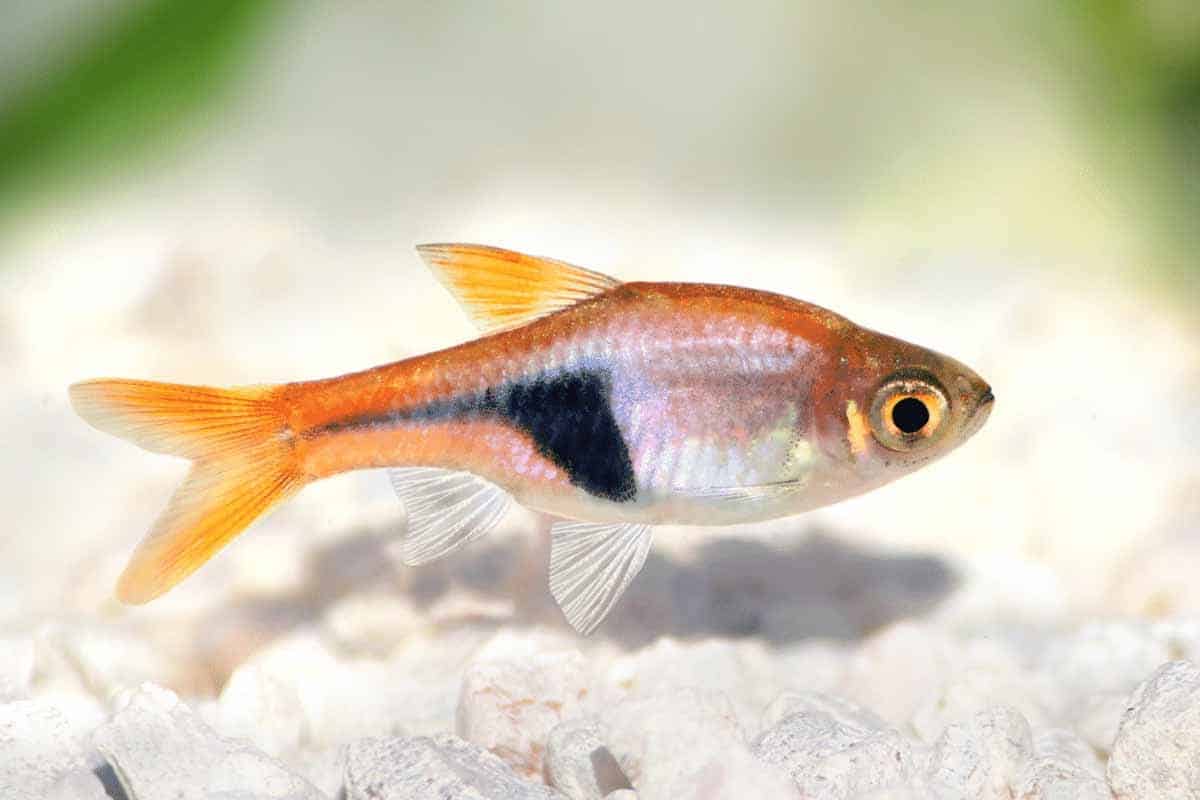
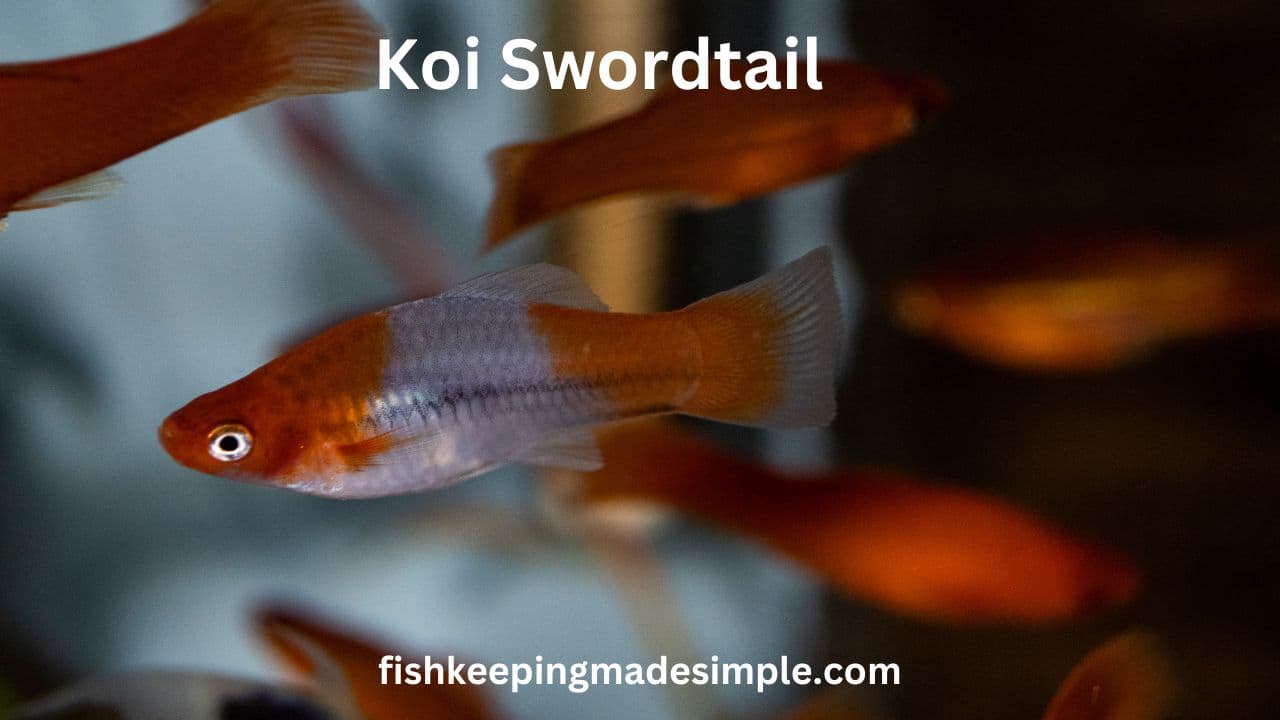

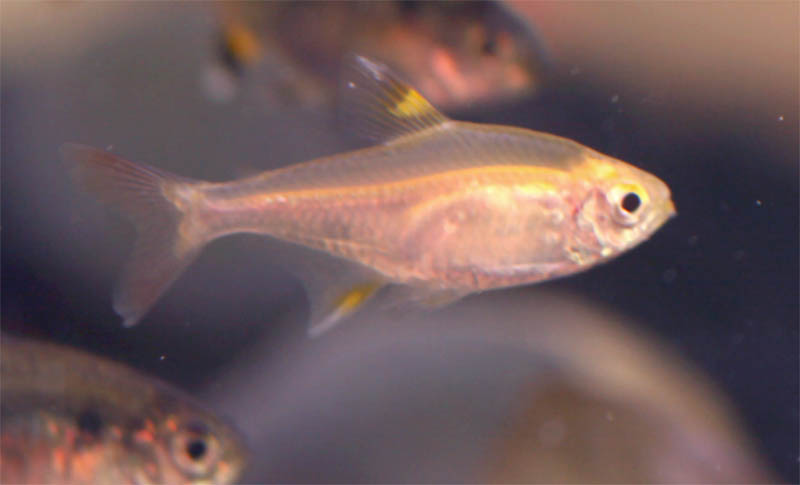
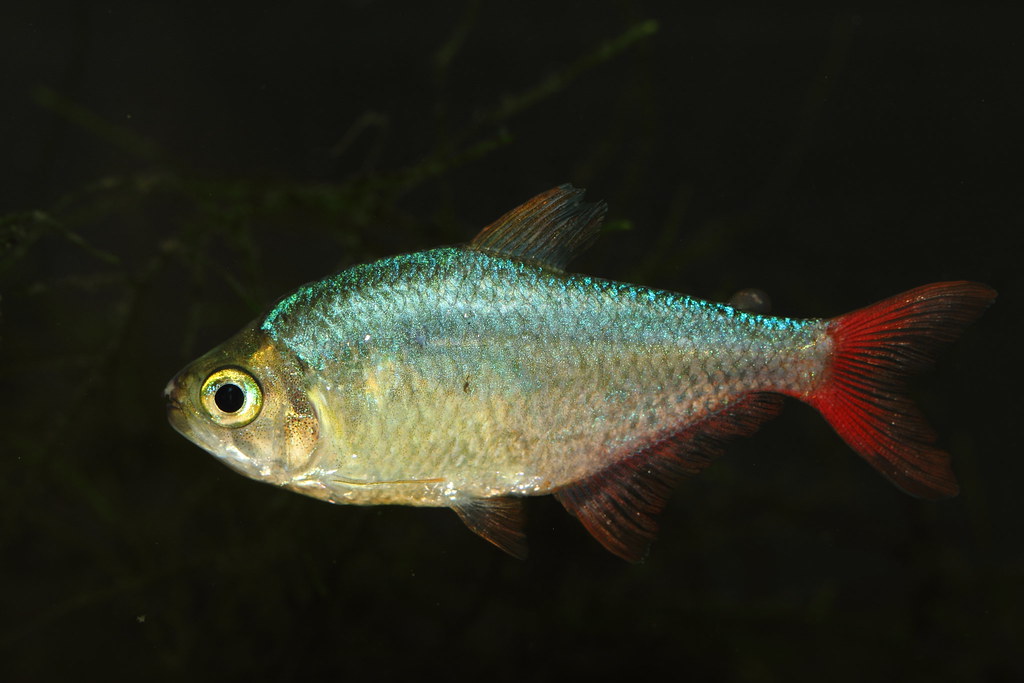
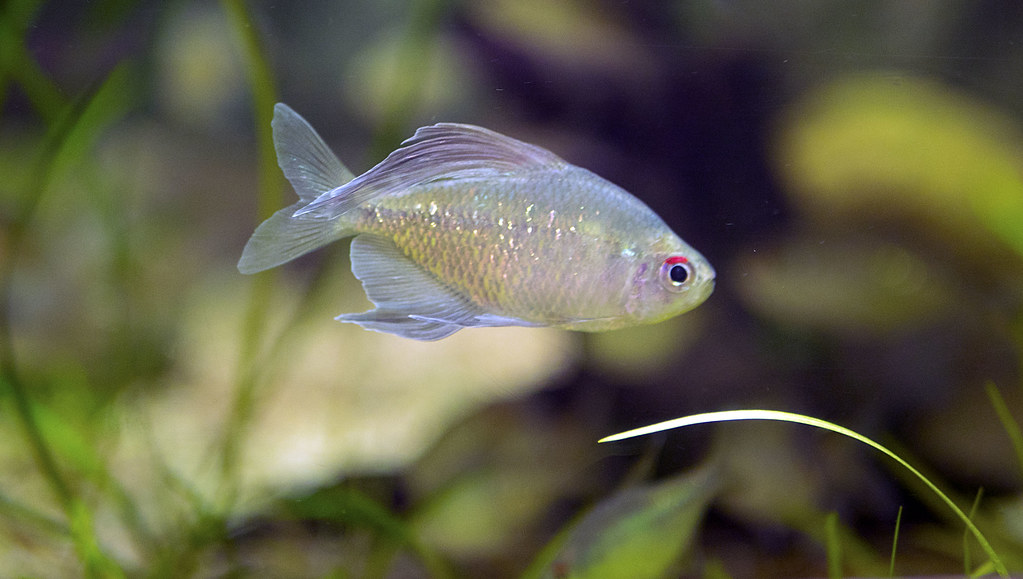
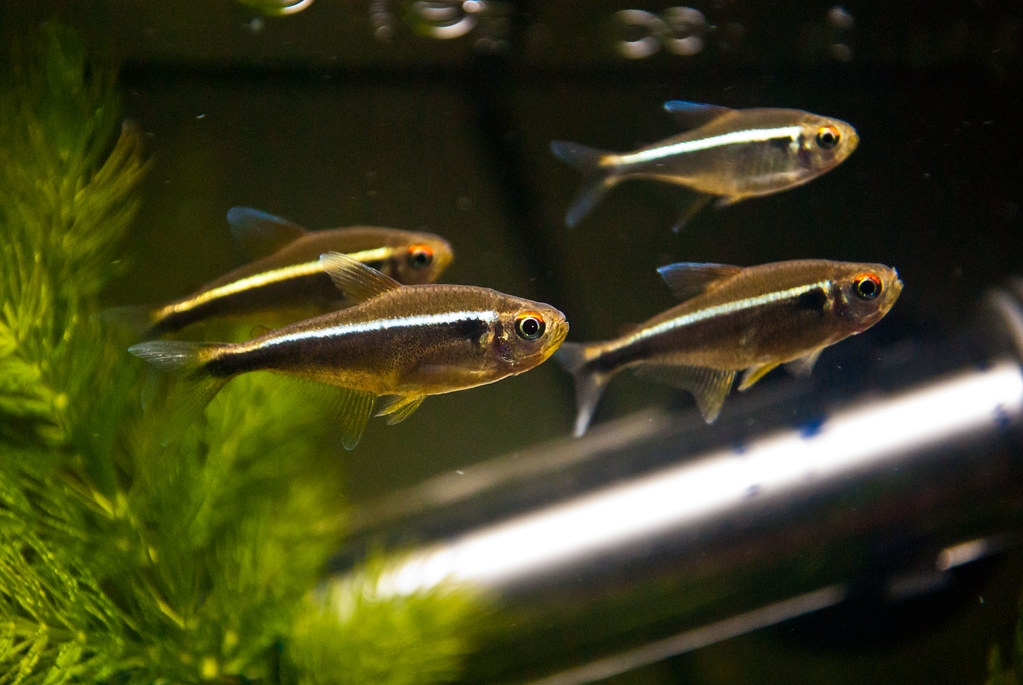
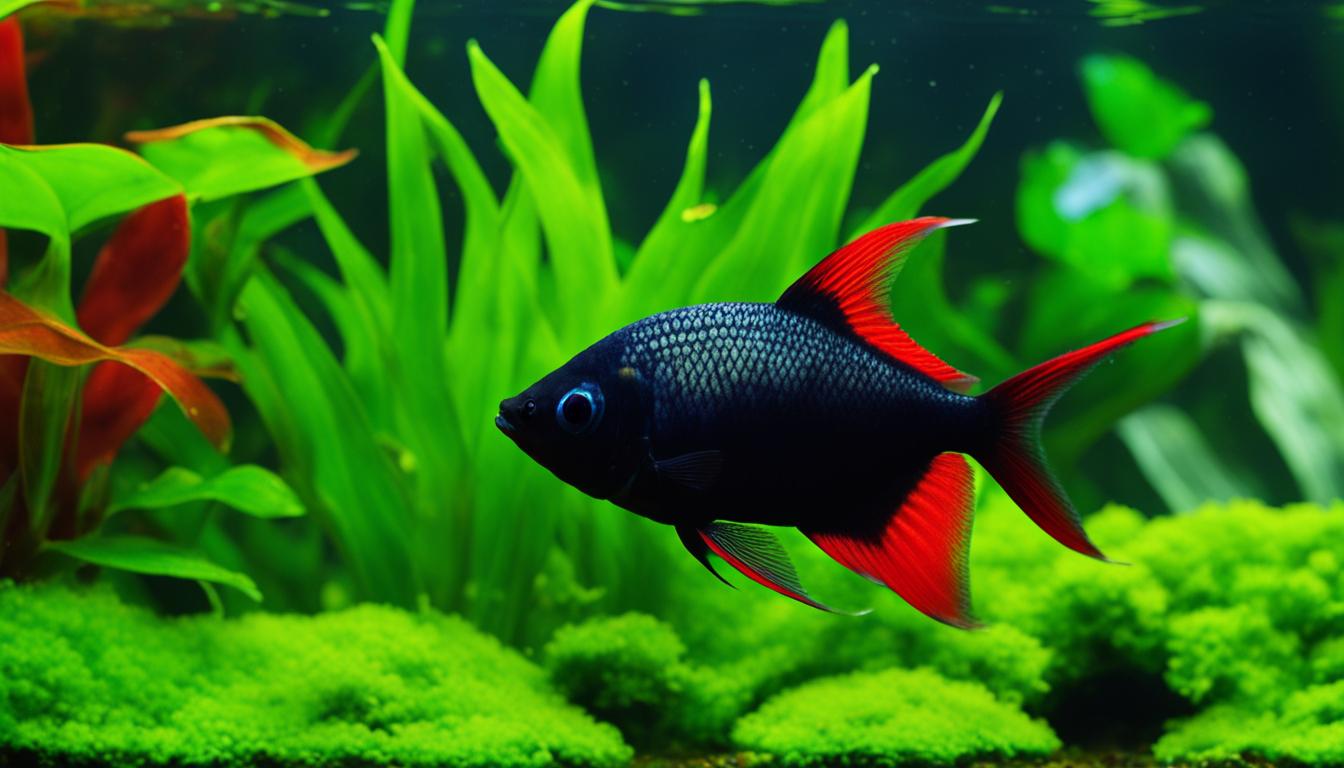

[…] in coastal regions. Its life cycle consists of several fascinating stages, from reproduction and breeding to development and parental care. Let’s explore each of these stages in […]